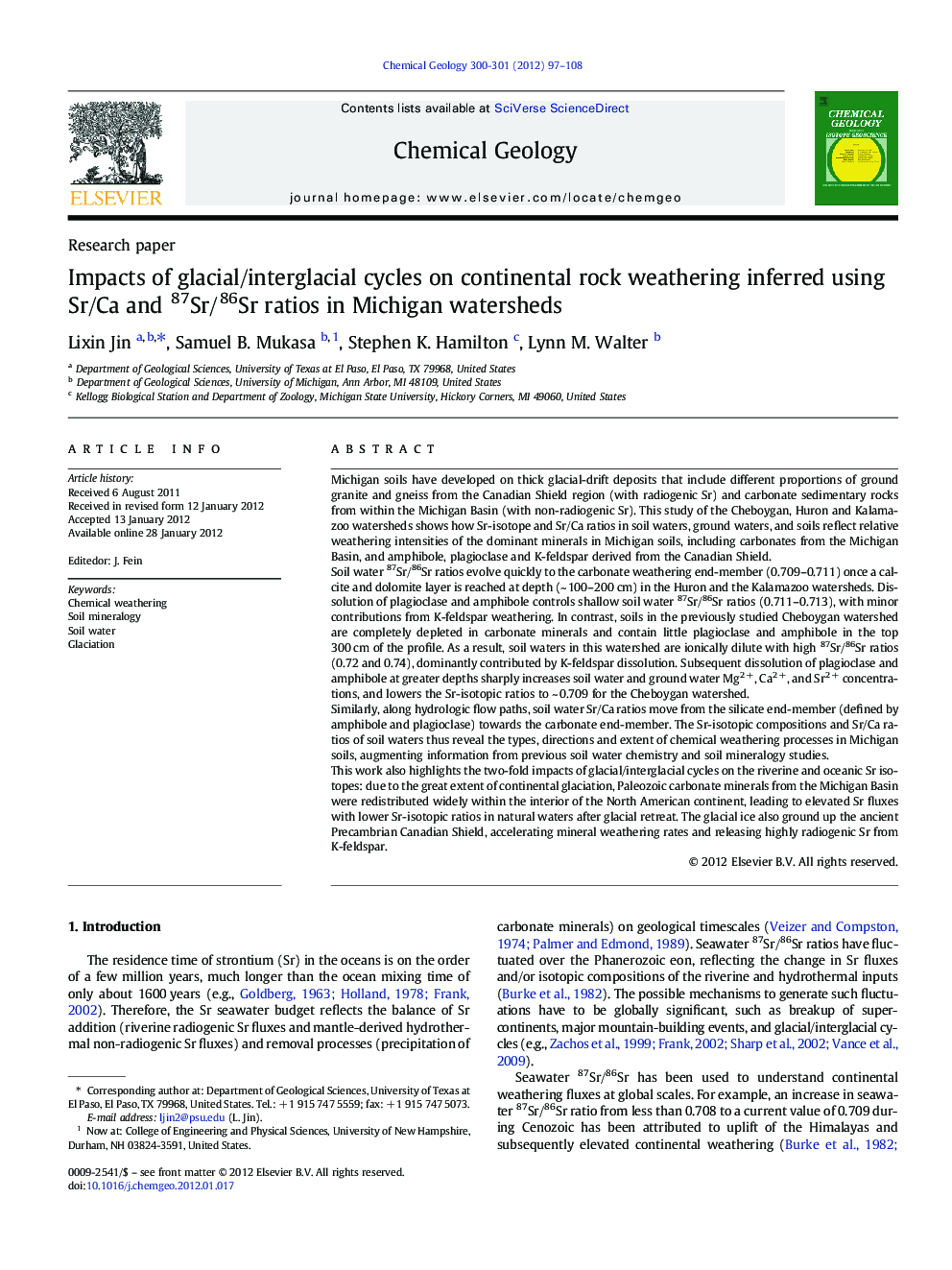| Article ID | Journal | Published Year | Pages | File Type |
|---|---|---|---|---|
| 4699484 | Chemical Geology | 2012 | 12 Pages |
Michigan soils have developed on thick glacial-drift deposits that include different proportions of ground granite and gneiss from the Canadian Shield region (with radiogenic Sr) and carbonate sedimentary rocks from within the Michigan Basin (with non-radiogenic Sr). This study of the Cheboygan, Huron and Kalamazoo watersheds shows how Sr-isotope and Sr/Ca ratios in soil waters, ground waters, and soils reflect relative weathering intensities of the dominant minerals in Michigan soils, including carbonates from the Michigan Basin, and amphibole, plagioclase and K-feldspar derived from the Canadian Shield.Soil water 87Sr/86Sr ratios evolve quickly to the carbonate weathering end-member (0.709–0.711) once a calcite and dolomite layer is reached at depth (~ 100–200 cm) in the Huron and the Kalamazoo watersheds. Dissolution of plagioclase and amphibole controls shallow soil water 87Sr/86Sr ratios (0.711–0.713), with minor contributions from K-feldspar weathering. In contrast, soils in the previously studied Cheboygan watershed are completely depleted in carbonate minerals and contain little plagioclase and amphibole in the top 300 cm of the profile. As a result, soil waters in this watershed are ionically dilute with high 87Sr/86Sr ratios (0.72 and 0.74), dominantly contributed by K-feldspar dissolution. Subsequent dissolution of plagioclase and amphibole at greater depths sharply increases soil water and ground water Mg2 +, Ca2 +, and Sr2 + concentrations, and lowers the Sr-isotopic ratios to ~ 0.709 for the Cheboygan watershed.Similarly, along hydrologic flow paths, soil water Sr/Ca ratios move from the silicate end-member (defined by amphibole and plagioclase) towards the carbonate end-member. The Sr-isotopic compositions and Sr/Ca ratios of soil waters thus reveal the types, directions and extent of chemical weathering processes in Michigan soils, augmenting information from previous soil water chemistry and soil mineralogy studies.This work also highlights the two-fold impacts of glacial/interglacial cycles on the riverine and oceanic Sr isotopes: due to the great extent of continental glaciation, Paleozoic carbonate minerals from the Michigan Basin were redistributed widely within the interior of the North American continent, leading to elevated Sr fluxes with lower Sr-isotopic ratios in natural waters after glacial retreat. The glacial ice also ground up the ancient Precambrian Canadian Shield, accelerating mineral weathering rates and releasing highly radiogenic Sr from K-feldspar.
► Sr/Ca and 87Sr/86Sr reveal the types of chemical weathering in Michigan soils. ► Glaciation led to higher Sr fluxes but lower isotopic ratios in Michigan waters. ► The glaciation ground up Canadian Shield, and accelerated mineral weathering rates.
